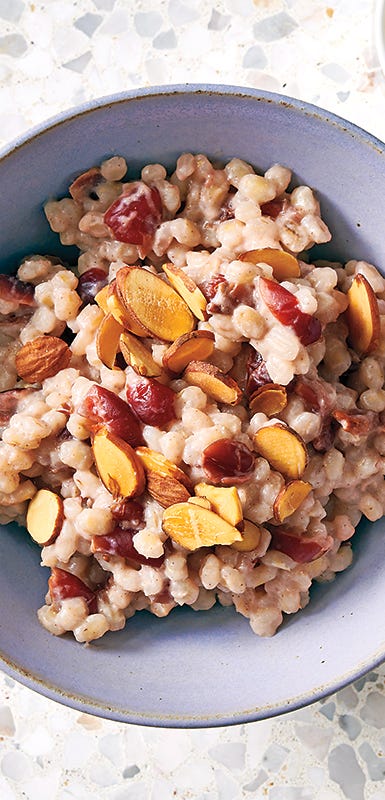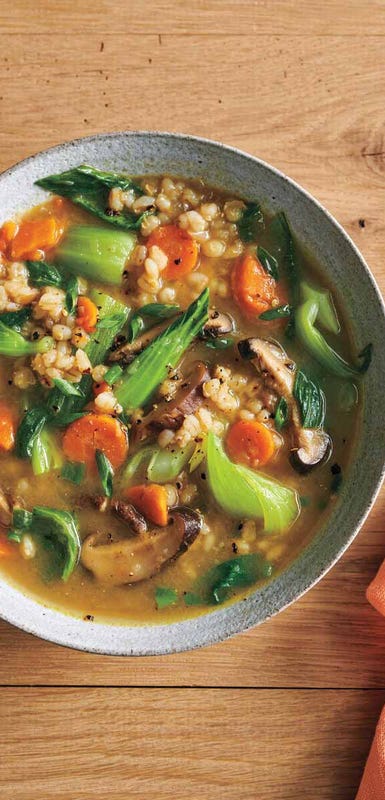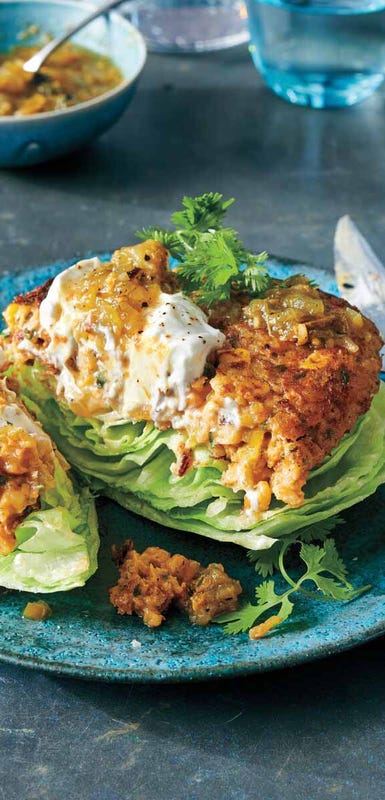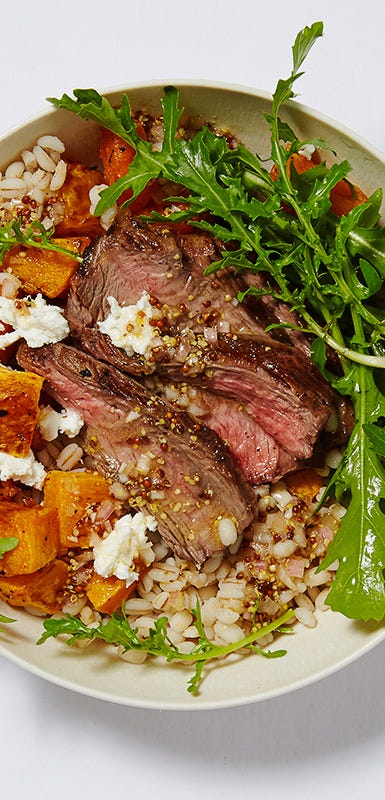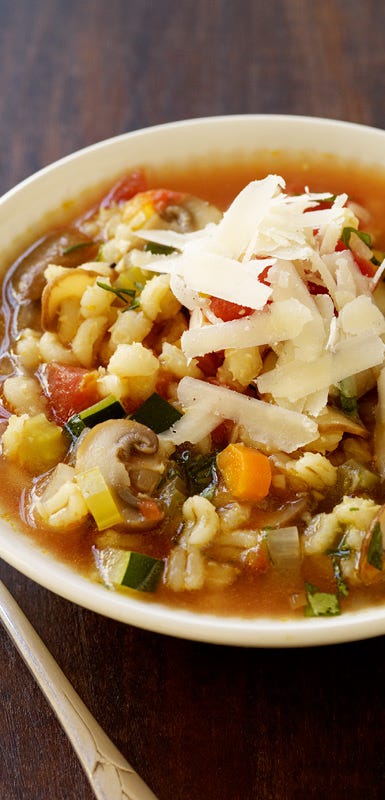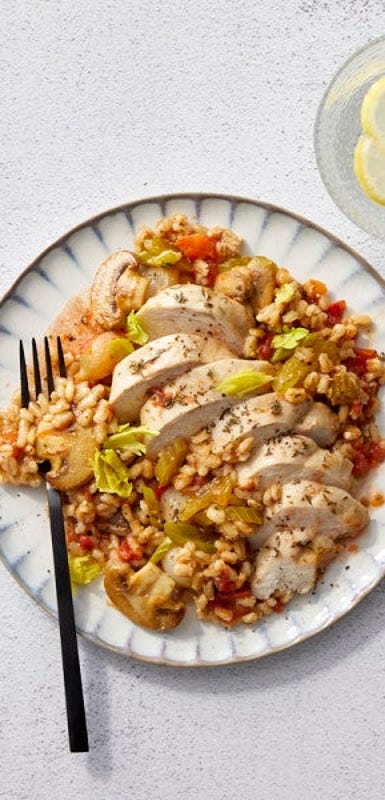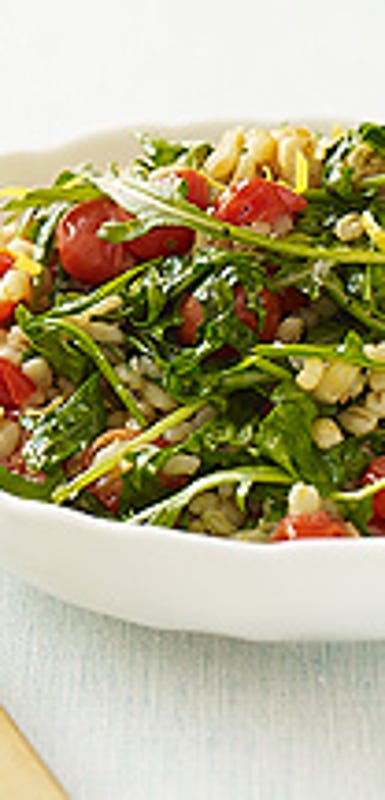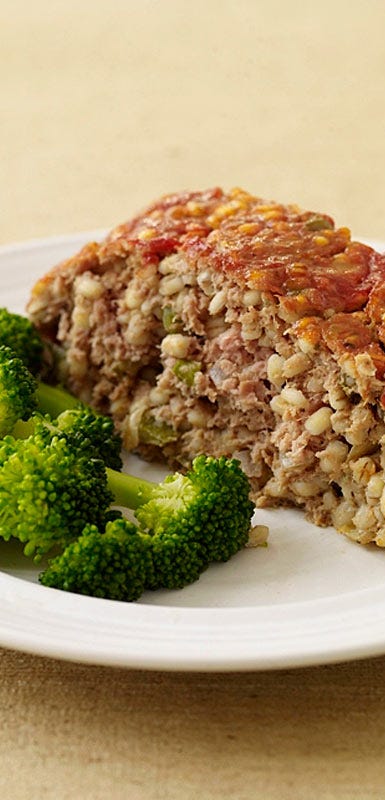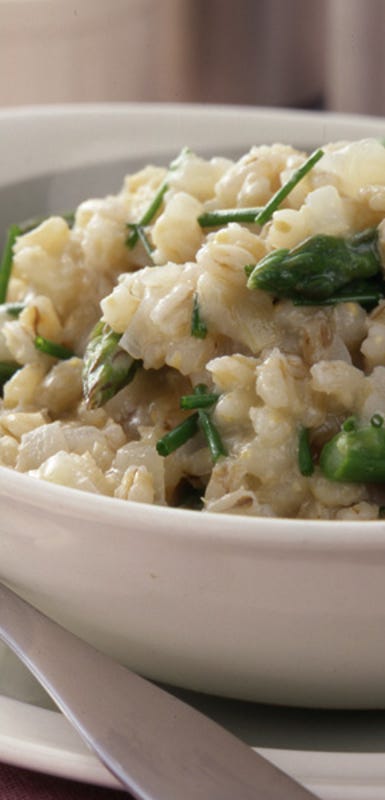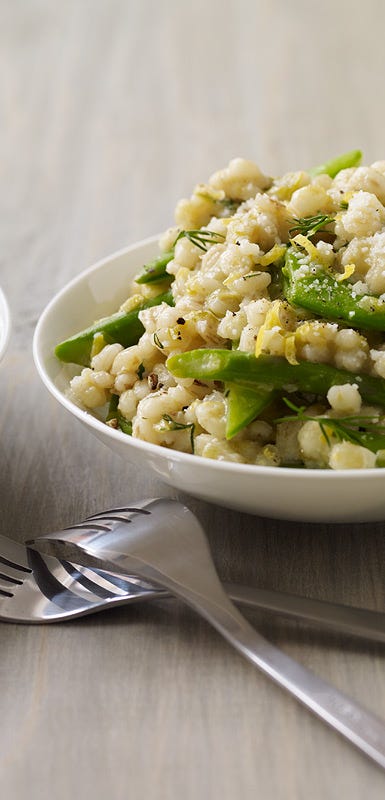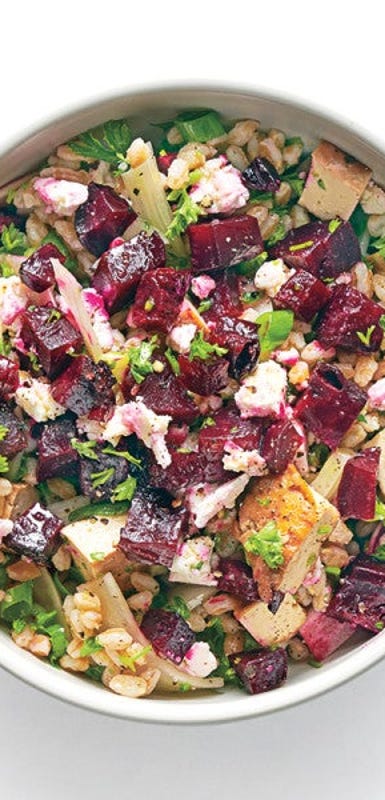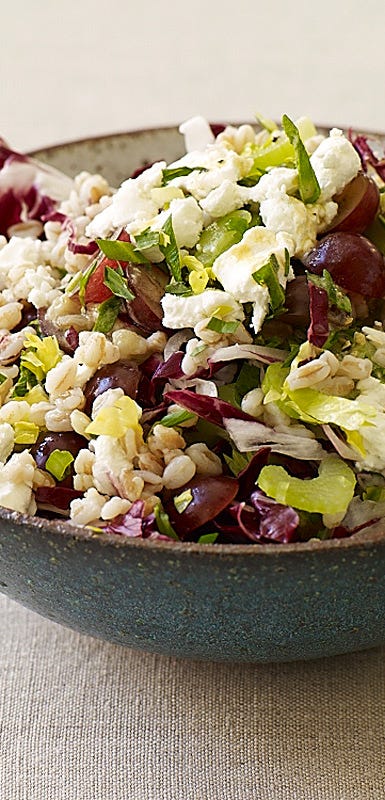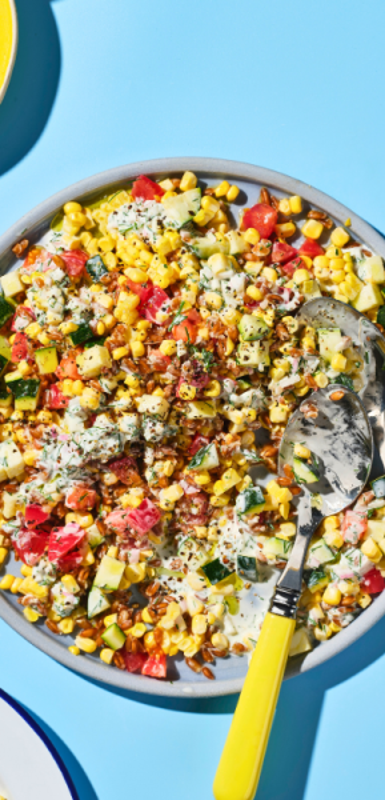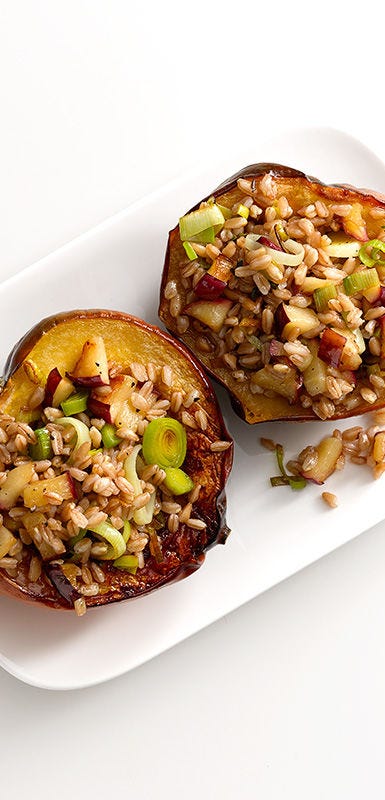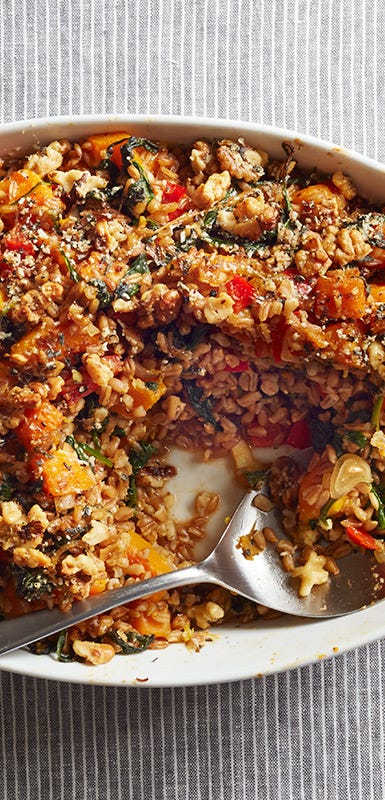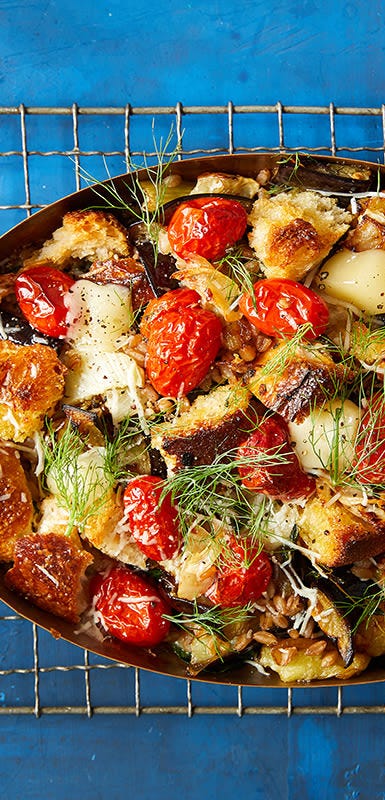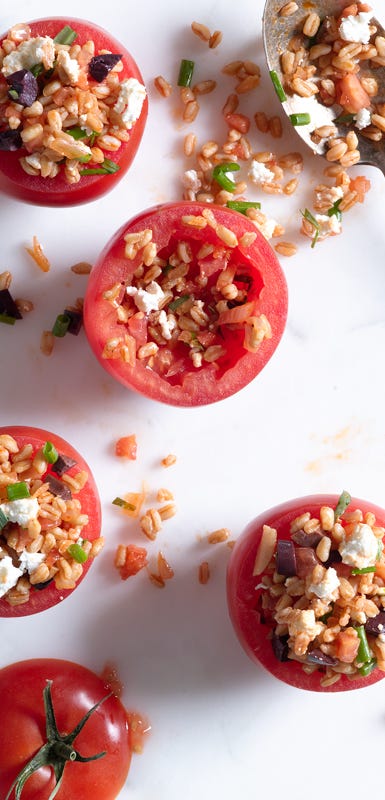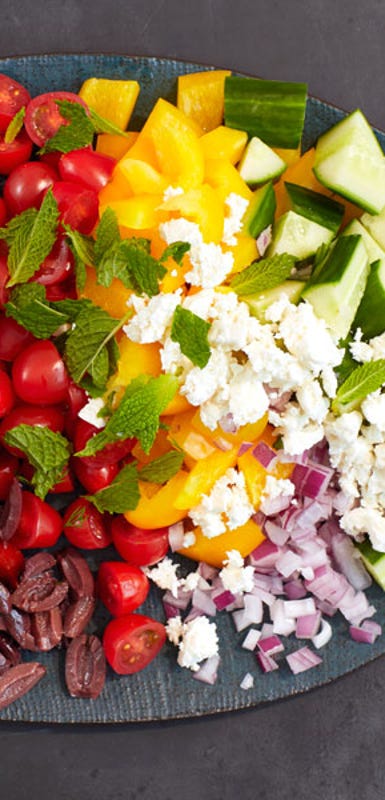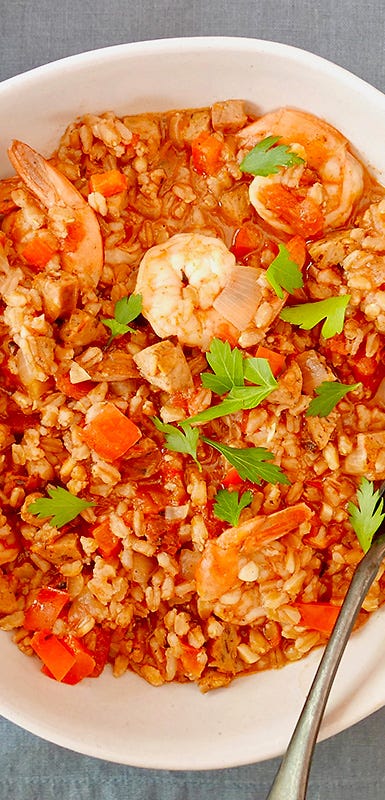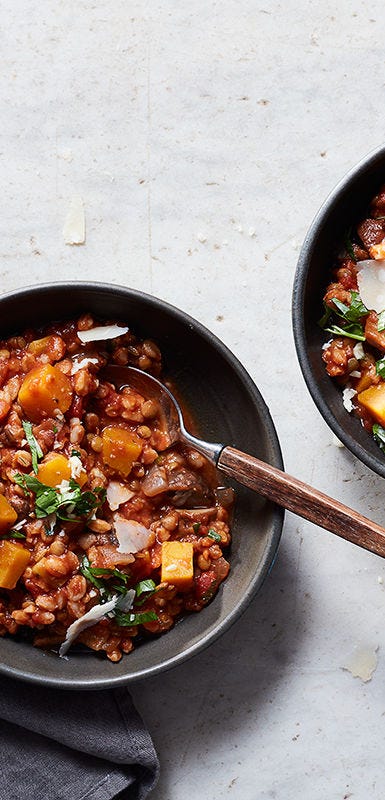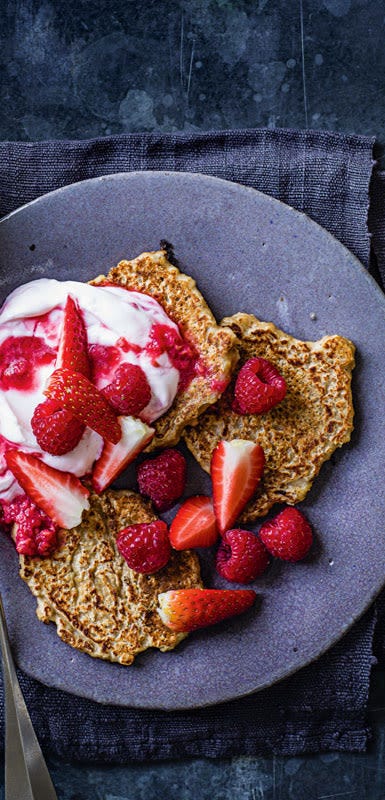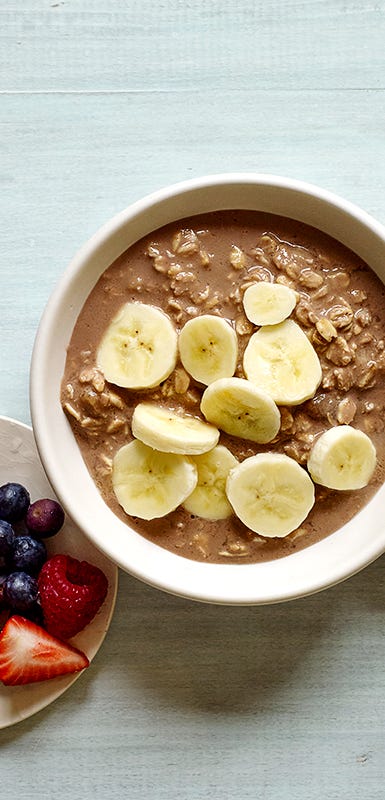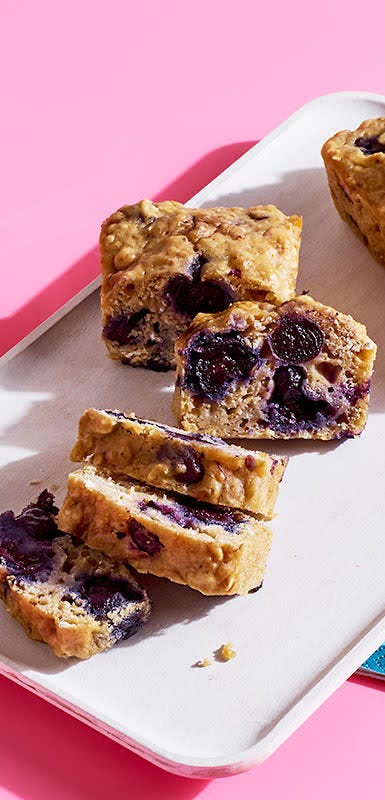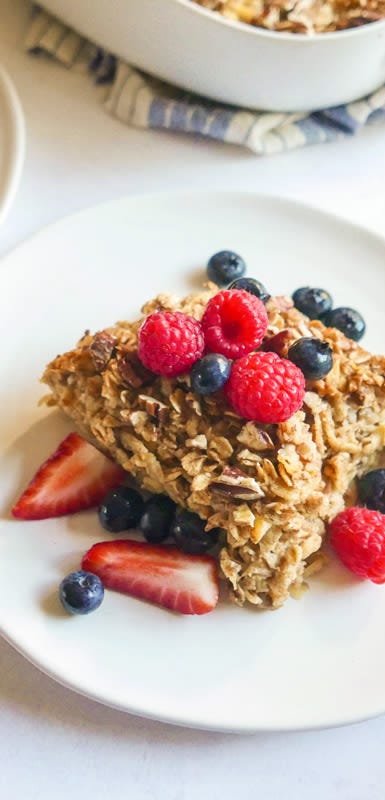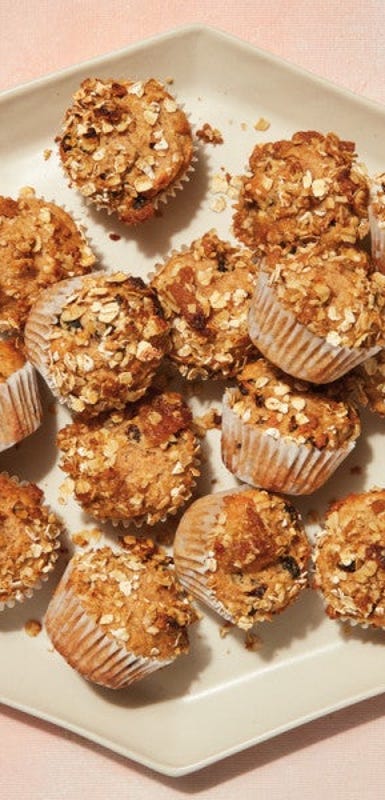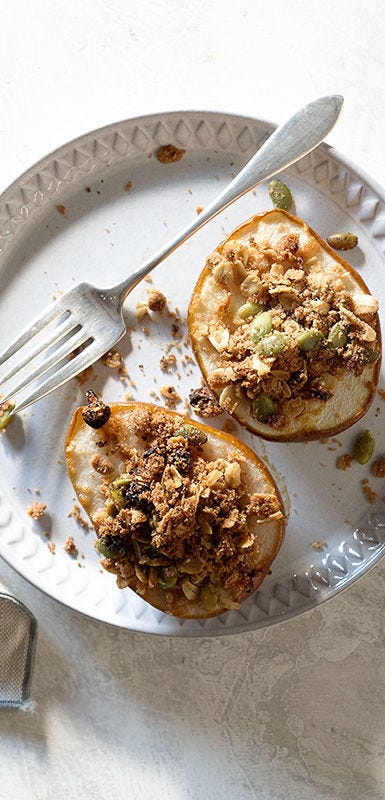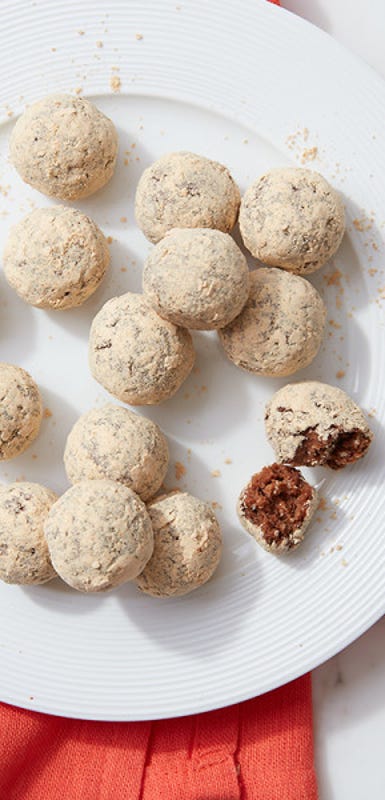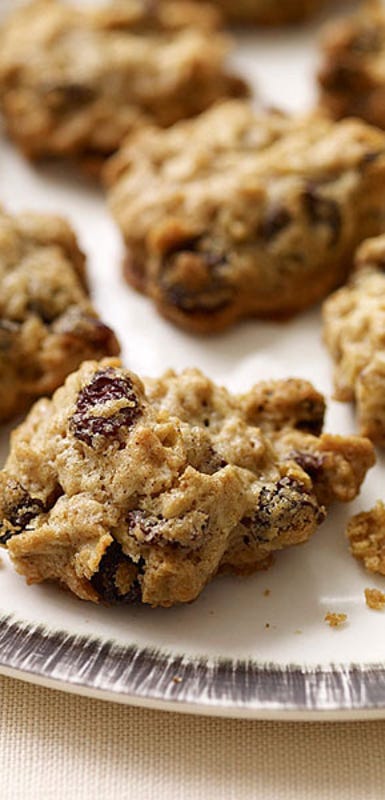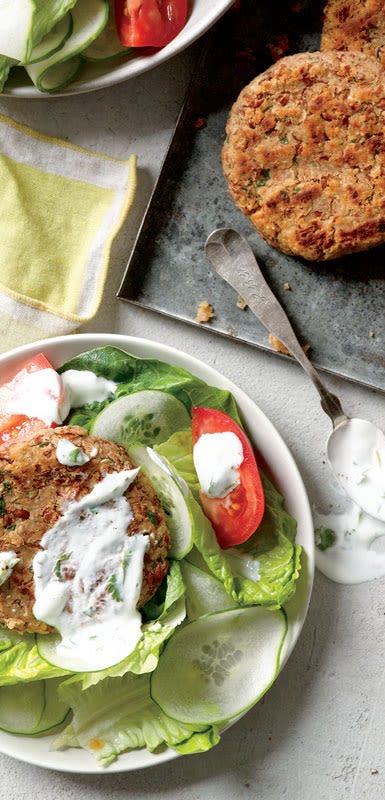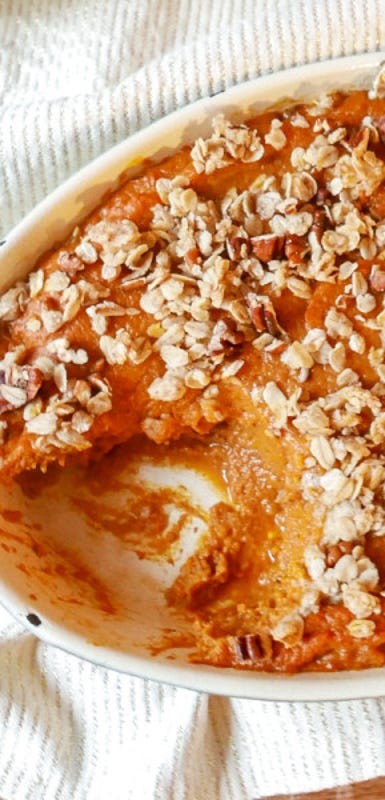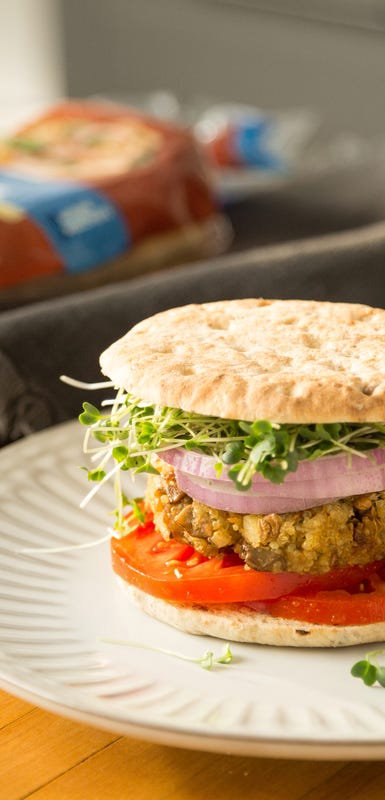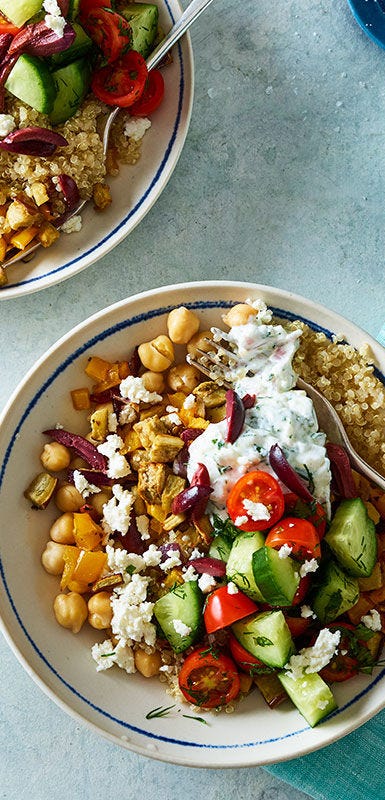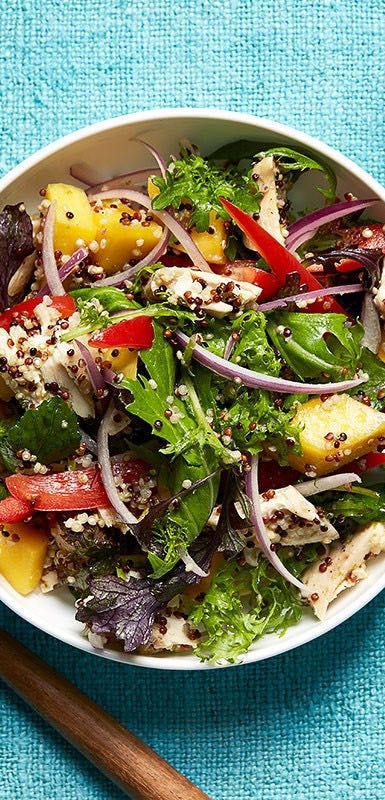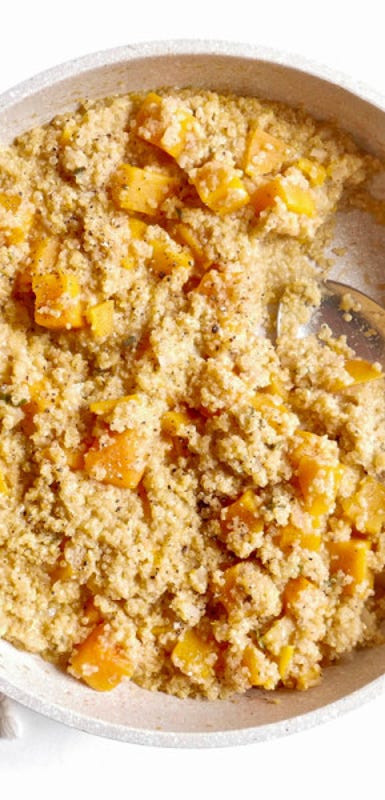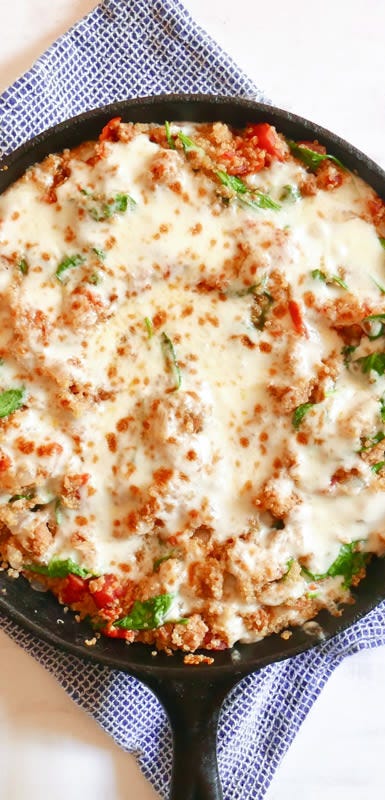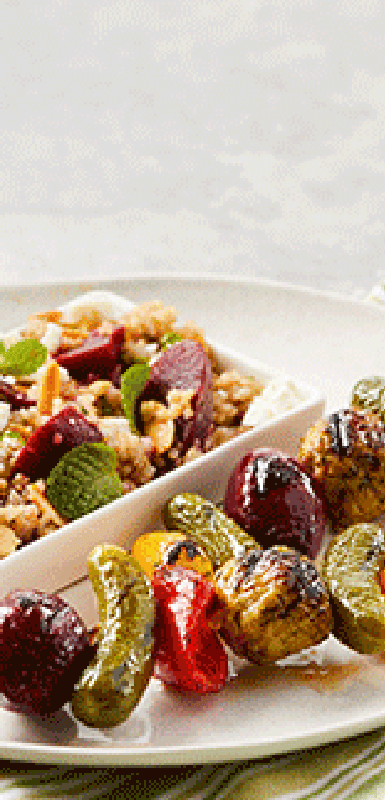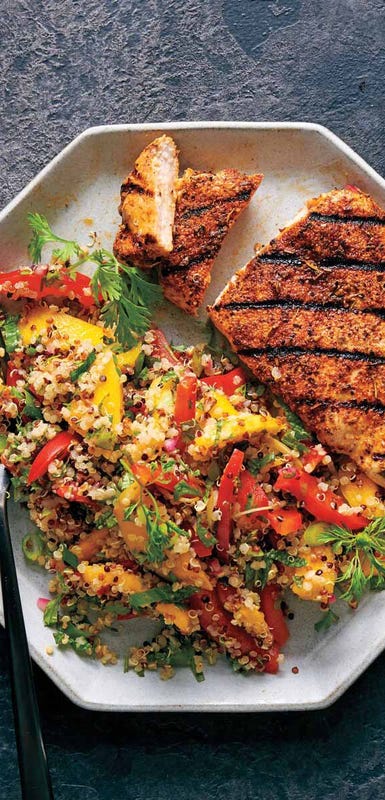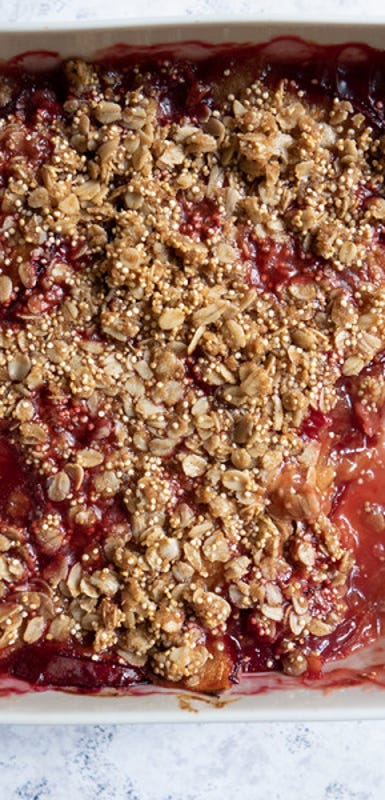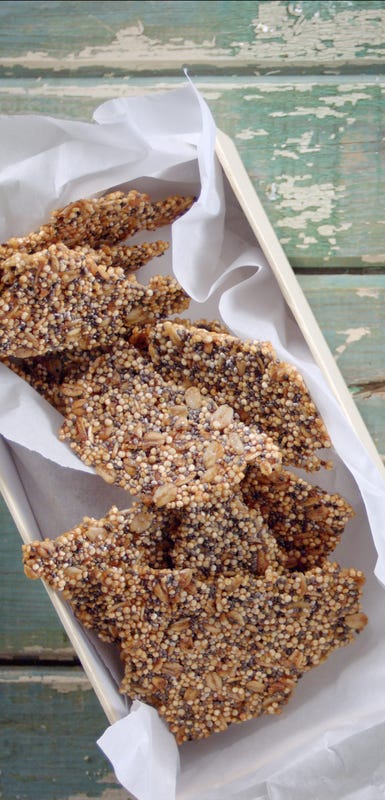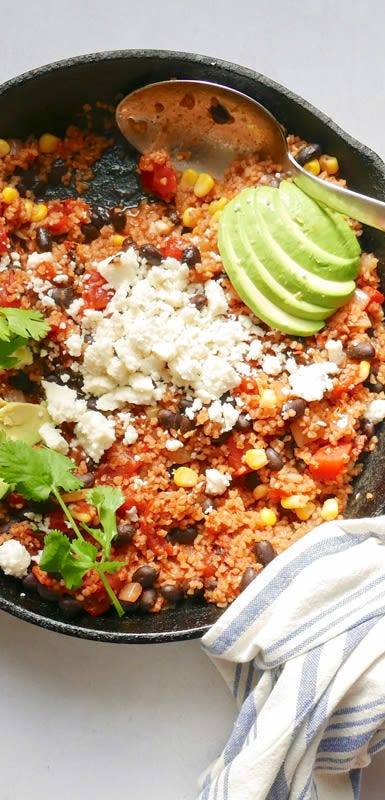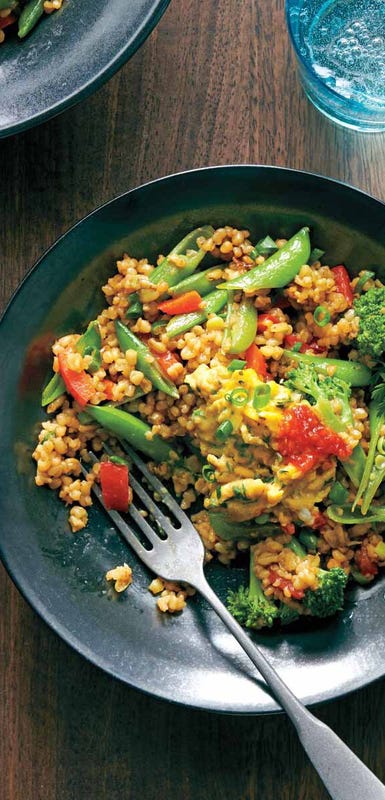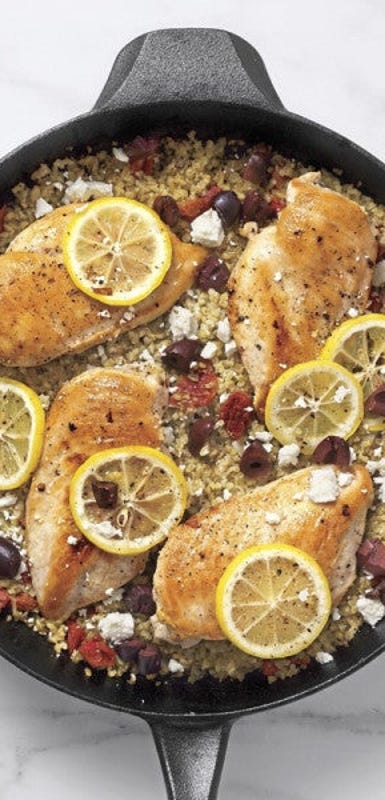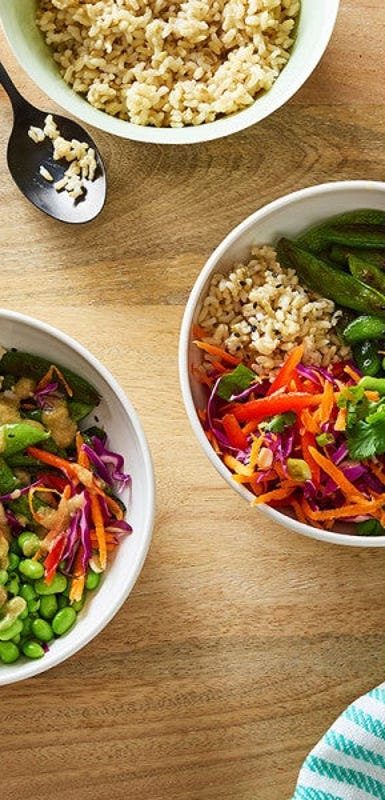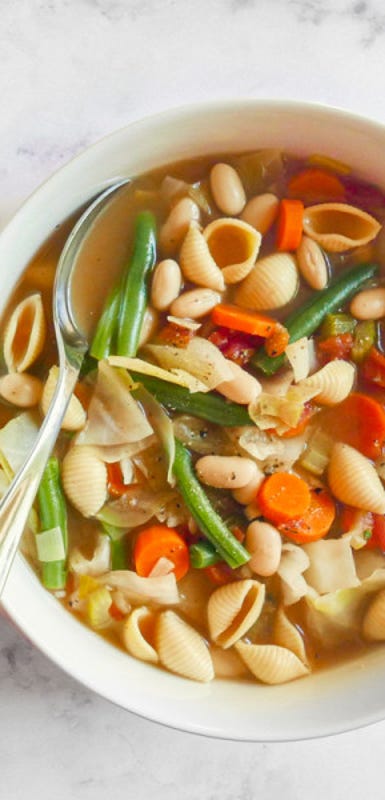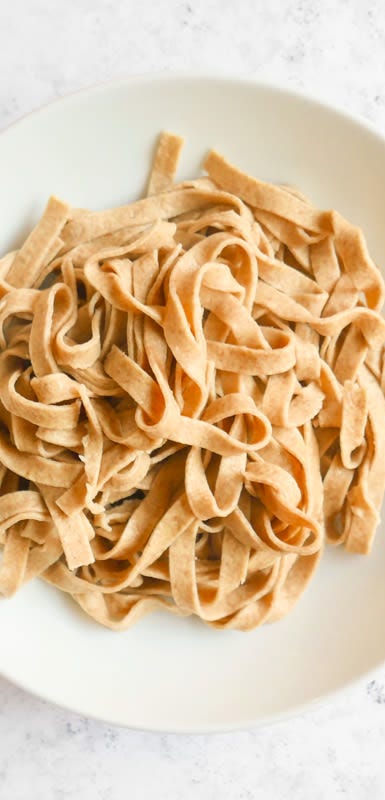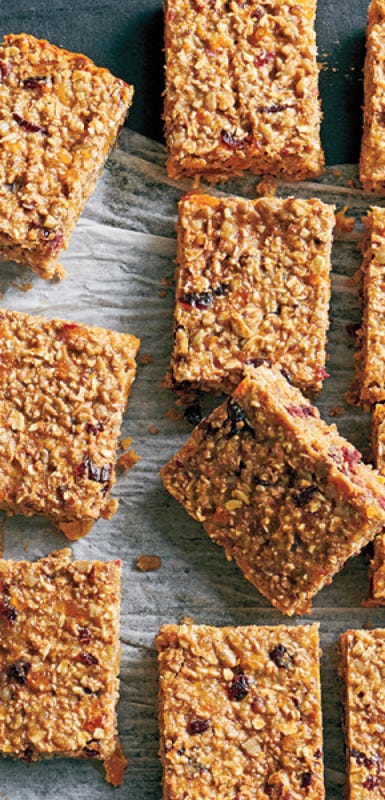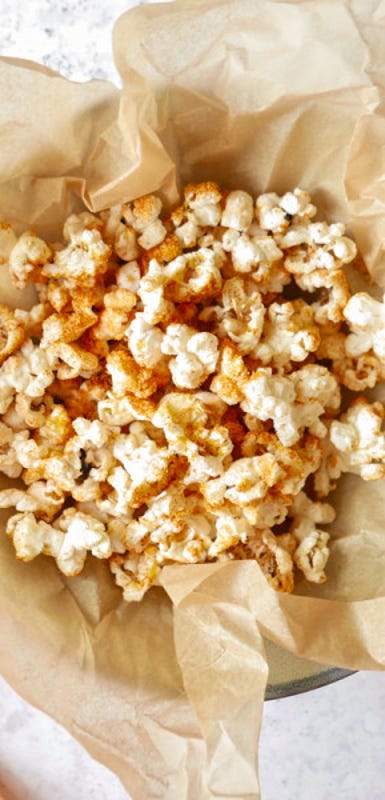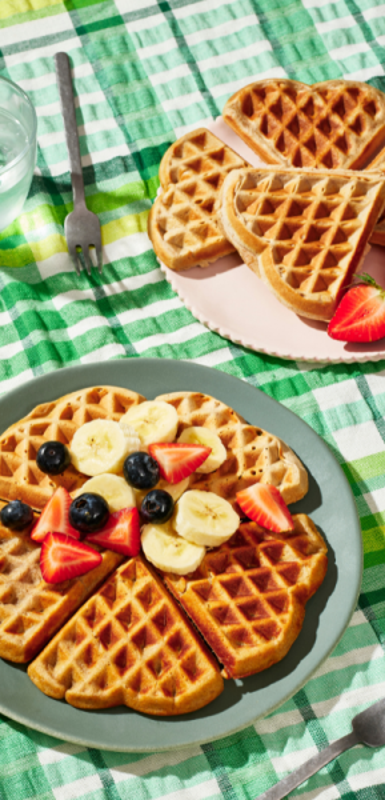Everything you need to know about whole grains - plus 50 recipes to try!
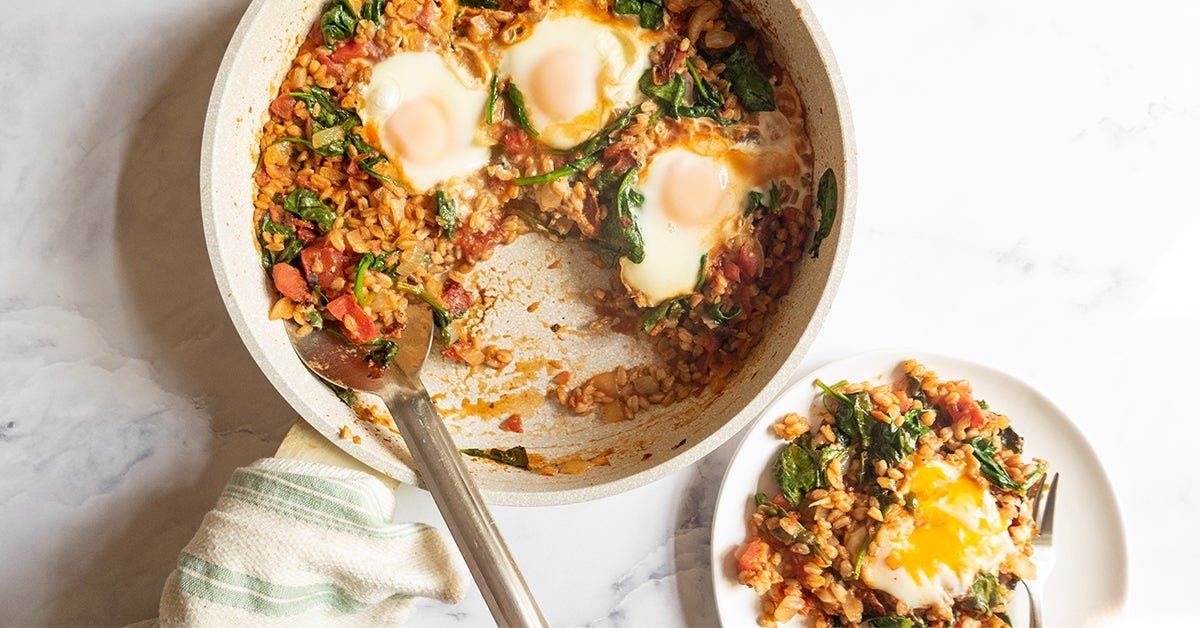
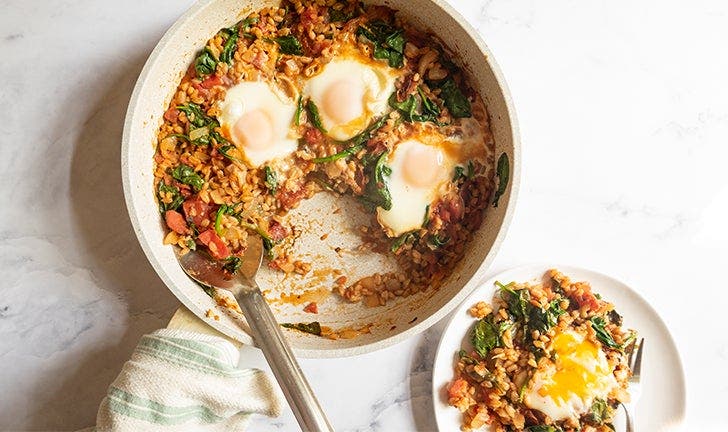
What is a whole grain?
A whole grain is defined as the intact, edible portion of any grain that has not undergone any form of refinement. A grain is only considered whole if it contains all three of the original parts: the bran, the germ, and the endosperm. The bran, which represents the outer multi-layer of the grain, supplies antioxidants, trace minerals, B vitamins, and fibre. The endosperm, seen as the inner layer of the whole grain and the germ’s food supply, is primarily rich in proteins, starchy carbohydrates, and contains only small trace amounts of vitamins and minerals. The most important part of the whole grain is the germ, also seen as the embryo of the whole grain. This section may be the smallest but it plays a crucial role - sprouting a new plant. This component of the grain supplies antioxidants, trace minerals, B vitamins, vitamin E, and essential fats.
When whole grains are milled, removing both the bran and endosperm, only the germ remains. These grains are then referred to as refined grains. Refining a grain will remove a quarter of the protein, and half to two thirds of vitamins and minerals, rendering the refined grain to be a less nutrient-rich version of its original form. Fun fact: whole grain and whole wheat are not the same. Whole wheat is one kind of a whole grain, so all whole wheat is a whole grain but not all whole grains are considered to be whole wheat. In Canada, for an item to be considered whole wheat, it must contain 95% of the original grain kernel. Similarly, for an item to be considered whole grain, it must contain 100% of the original grain kernel.
WW and whole grains
Whole grains, when eaten at breakfast, lunch, dinner, and as a snack, can help form the foundation for a healthy eating pattern.Some popular grains include:
- Amaranth
- Barley (including pearled and semi pearled)
- Brown rice (including long grain, jasmine, Thai, basmati)
- Buckwheat
- Bulgur
- Farro (including hulled, pearled and semi-pearled)
- Millet
- Mixture of whole grains/whole flakes, such as muesli
- Oats
- Plain popcorn
- Quinoa
- Rye
- Spelt
- Wheat and wheat flakes
- Wheatberries
- Whole grain pasta/noodles
- Whole wheat couscous
- Wild rice
Whole grains and health
Research continues to prove that whole grains are good for you, from head to toe. Fibre is vital to a healthy diet. Both the soluble and insoluble fibre in whole grains can lead to a reduced risk of chronic diseases, including heart disease by improving cholesterol and slowing the buildup of arterial plaque. Fibre will also regulate the transit of sugar into the bloodstream and improves insulin control, thus acting as a protective barrier for type 2 diabetes. Fibre can also promote a healthy digestive system, aiding with satiation, weight management, and bowel regularity. Making the switch and making half of your grains whole grains can also provide the following health benefits:
- Lower BMI
- Lower risk of stroke
- Reduced gut inflammation
- Improved gut bacteria
- Learn more about the role of fibre in your diet here.
Learn more about the role of fibre in your diet here.
How to identify whole grain products
When you are walking through the grocery aisles, or completing your online grocery order, there are two main ways to determine if a package can be classified as a whole grain.
- Look for the easy-to-spot whole grain symbol that contains the grain sheaf icon. This guarantees you’re getting a half serving (8g) or more of a whole grain from the product you are purchasing. There can also be a 100% mark added to this stamp indicating that there are no refined grains, if all ingredients are in fact whole grain.
- Packaging with following words indicate the product is not whole grain: enriched flour, bran, germ, wheat germ, degerminated cornmeal, farine, and/or grits. All of these words describe a product that is NOT a whole grain. Instead, look for packages that contain these words: whole (name of grain), whole (name of grain) flour, whole grain (name of grain), (name of grain) berries, or (name of grain) groats. All of these words will imply that you are purchasing a whole grain product.
Healthy makeovers with whole grains
Substituting refined grains for whole grains not only provides essential nutrients but it also increases the intake of fibre all while providing added textures and hearty flavours. These eight suggestions can help you incorporate more whole grains into your diet.!
- Make your family favourites on whole grain breads, English muffins, or roll them up in a whole wheat tortilla
- Swap out white pasta for whole grain and high-fibre varieties for minestrone, soup, pasta, or cold salad
- Substitute white rice for brown or wild rice in savoury dishes such as pilaf, risotto, and rice salads
- Use quinoa or couscous as a crunchy topping for salads
- Make stuffings, soups, and stews more hearty by adding your choice of whole grains. This will also build up layers of flavour.
- In doughs and batters, substitute whole wheat flour for half of the refined white flour
- Swap out white pizza dough for whole wheat pizza crust or flatbreads
- Make polenta, grits, and cornbread with whole cornmeal
Whole grain pantry staples
Looking for new grains to use while getting creative with your cooking? Or perhaps you’re getting reacquainted with an old time grain friend. These grains are simple to prepare, nutrient rich, and a hearty pantry staple.
Barley
Barley, one of the most hearty ancient grains, contains 17 per cent fibre, making it one of the highest fibre-containing whole cereal grains and provides 10 per cent of the recommended daily value of protein. Pearl barley, the polished form of barley, is the most commonly sold form of barley, which can be stored in the pantry for six months and in the freezer for up to one year. Barley flour can be kept in the pantry for three months and in the freezer for up to six months. When cooking barley, use a one cup grain to three cups liquid ratio. Barley is firm and chewy, making it a great substitution for white rice in risottos and curries and a wonderful addition to salads, pilafs, casseroles, and stews. Barley has a hearty flavour with a sweet undertone, which makes it a great pair for warm spices, root vegetables, and mushrooms. Try out these barley recipes below!
Farro
If you want to talk about whole grains and whole health, let’s take a look at farro. Also referred to as emmer wheat, farro contains the highest levels of antioxidants and carotenoids, which are particularly important to healthy eye functions. It is a great source of iron, provides 10 per cent of the recommended daily value of protein, 20 per cent the recommended daily value of fibre, and contains at least half of the daily value of manganese, which aids in macronutrient metabolism. Farro can be stored in the pantry for six months and in the freezer for up to one year. Farro flour can be kept in the pantry for three months and in the freezer for up to six months. When cooking farro, use a one cup grain to 2 ¾ cups liquid ratio. Farro’s dense, chewy, rich, and nutty flavour is truly amplified when baked into breads and used for pasta and risotto-type dishes. Try out these farro recipes below!
Oats
Oats, unlike most other ancient grains, are almost never exposed to processing, which means that you are almost always guaranteed to be getting the whole grain in every package. They contain polyphenols, which have a rich anti-inflammatory property that can reduce chronic inflammation and promote gut health. Oats also provide 10 per cent of the recommended daily value of: protein, fibre, B1, magnesium, phosphorus, and zinc. Oats can be stored in the pantry for four months and in the freezer for up to eight months. Oat flour can be kept in the pantry for two months and in the freezer for up to four months. When cooking oats, your grain to water ratio will vary based on the type of oat being used. This grain has a toasty aroma with flavours of butterscotch, making it a great pair for fruit, cinnamon, and coconut in sweet dishes and thyme, mushrooms, and walnuts in savoury dishes. Try out these oat recipes below!
Quinoa
Grains are members of the Poaceae grass family, which produce a dry, edible one-seeded fruit commonly referred to as a kernel, grain, or berry. Quinoa, one of the six pseudo-grains, is not derived from cereal grains or grasses but rather from a flowering pseudo-cereal. Quinoa, one of the pseudo-cereal grains, harvested from a leafy plant, is a seed with a different botanical origin but similar nutritional composition to cereal grains and thus can be used in the same culinary manner. To add, quinoa is a complete protein, meaning it contains all nine of the essential amino acids that the body needs for healthy bodily functions. It is also rich in potassium, helping to regulate blood pressure, and is full of antioxidants to aid with the management of type 2 diabetes. Also make note that quinoa is a great gluten free grain option! Quinoa can be stored in the pantry for four months and in the freezer for up to eight months. Quinoa flour can be kept in the pantry for two months and in the freezer for up to four months. When cooking quinoa, use a one cup grain to two cups liquid ratio but be sure to rinse the quinoa before cooking to ensure that the bitter saponin coating has been washed away. Quinoa’s firm chew is ideal for warm and cold salads, and is best suited for side dishes and pilafs. This grain pairs extremely well with corn, black beans, avocado, cilantro, and citrus. Try out these quinoa recipes below!

